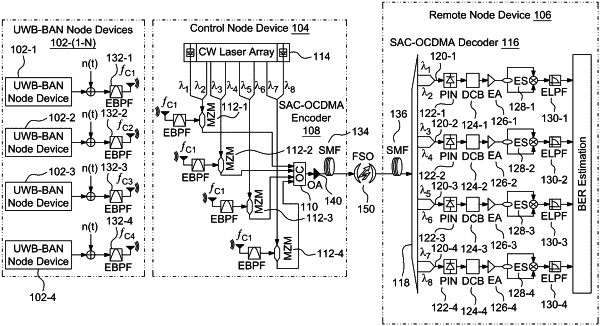| CPC H04B 13/005 (2013.01) [H04B 1/7163 (2013.01); H04B 10/11 (2013.01)] | 20 Claims |

|
1. A body area network (BAN) architecture, comprising:
a plurality of ultra-wideband (UWB) BAN node devices configured to
measure real-time physiological data of a patient, and
transmit the physiological data using UWB signals;
a control node device configured to
receive the UWB signals transmitted from the plurality of UWB BAN node devices,
encode the UWB signals using a spectral amplitude coding-optical code division multiple access (SAC-OCDMA) encoder,
modulate the encoded UWB signals using an on-off keying (OOK) scheme,
combine the modulated UWB signals into an optical signal using an optical coupler, and
transmit the combined optical signal through a free space optics (FSO) link; and
a remote node device configured to
receive the combined optical signal transmitted from the control node device,
decode the combined optical signal using an SAC-OCDMA decoder,
convert the decoded optical signal into an electrical signal, and
analyze the physiological data of the patient based on the electrical signal.
|